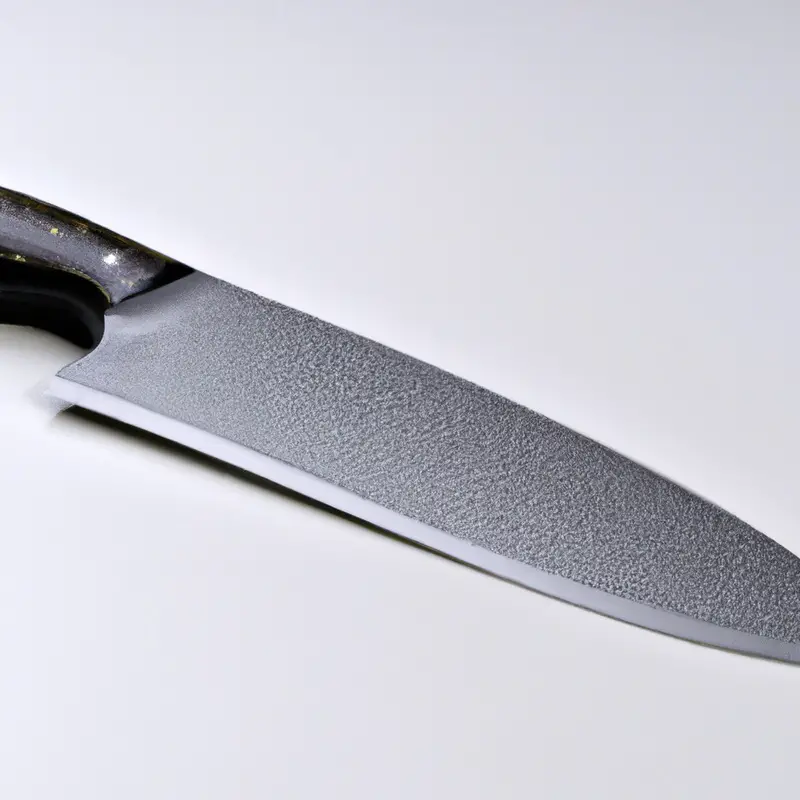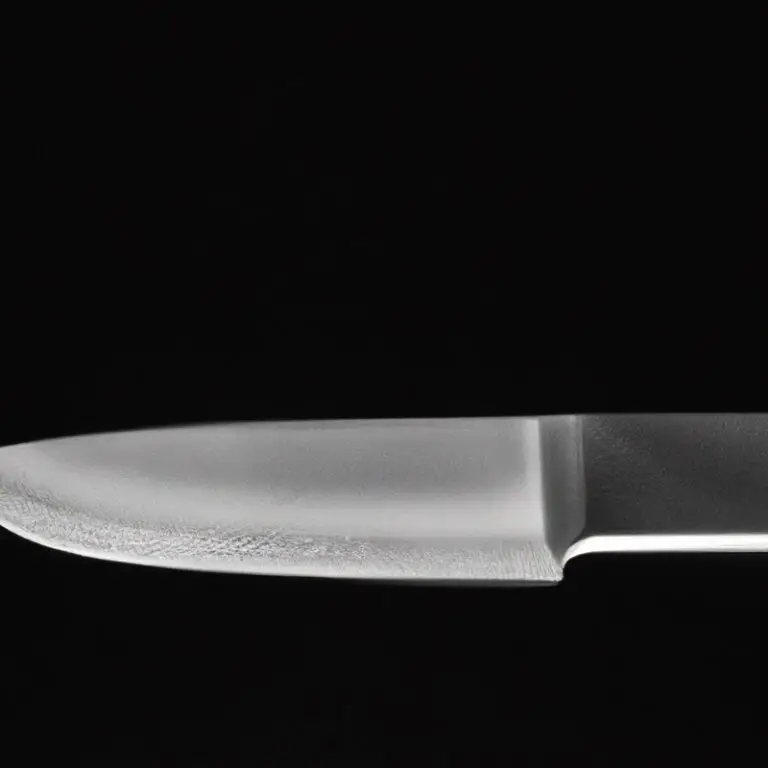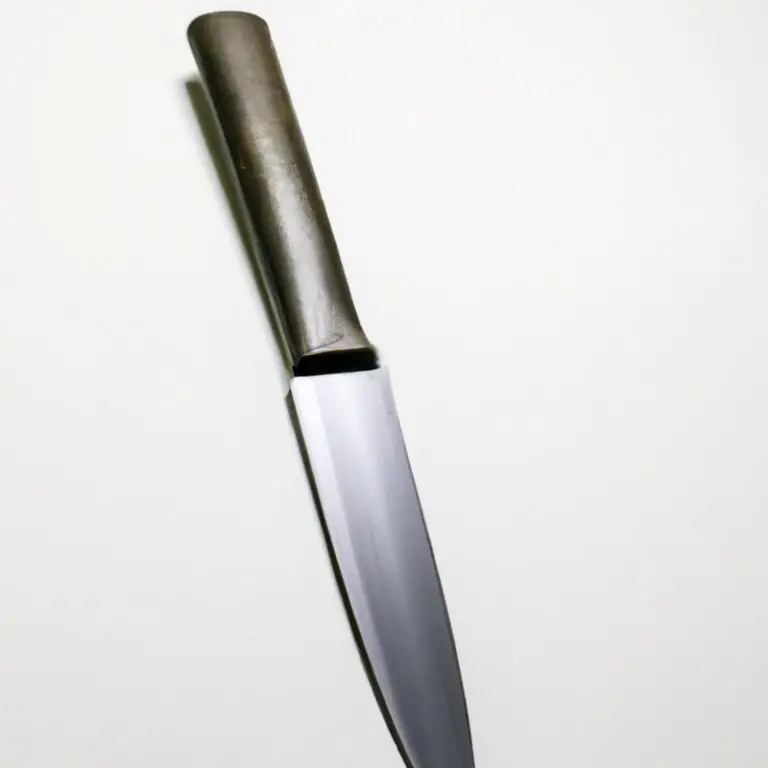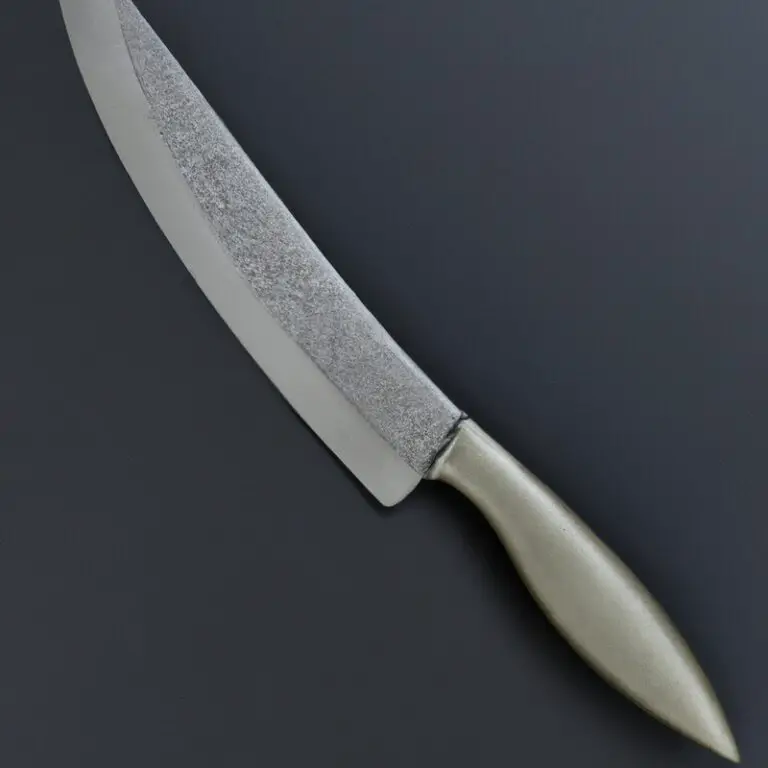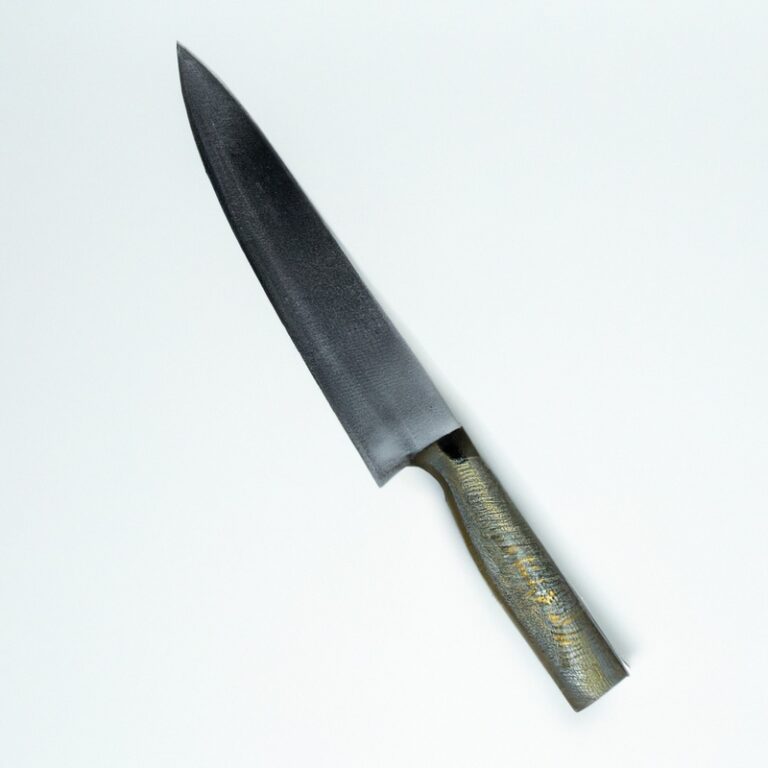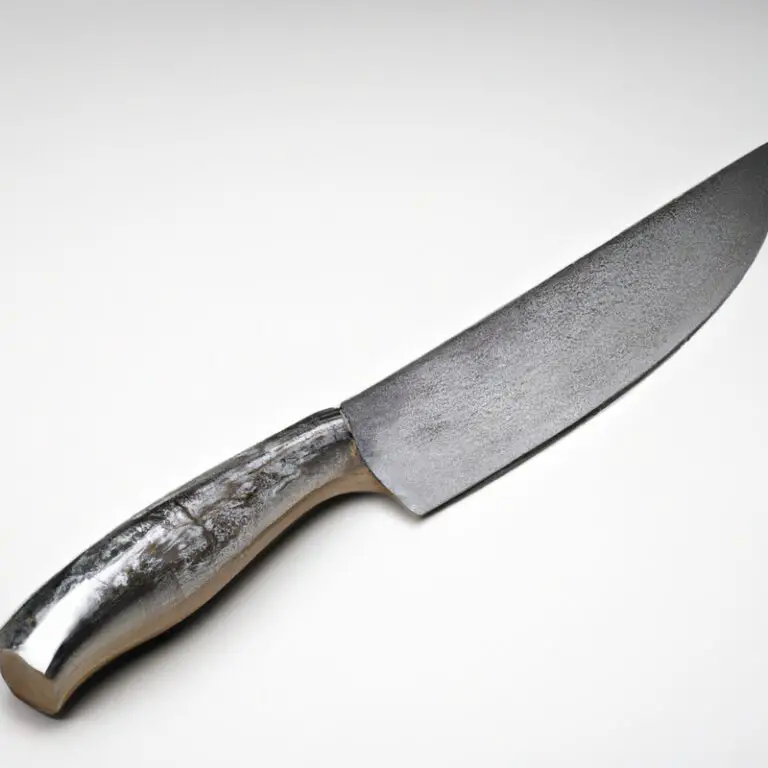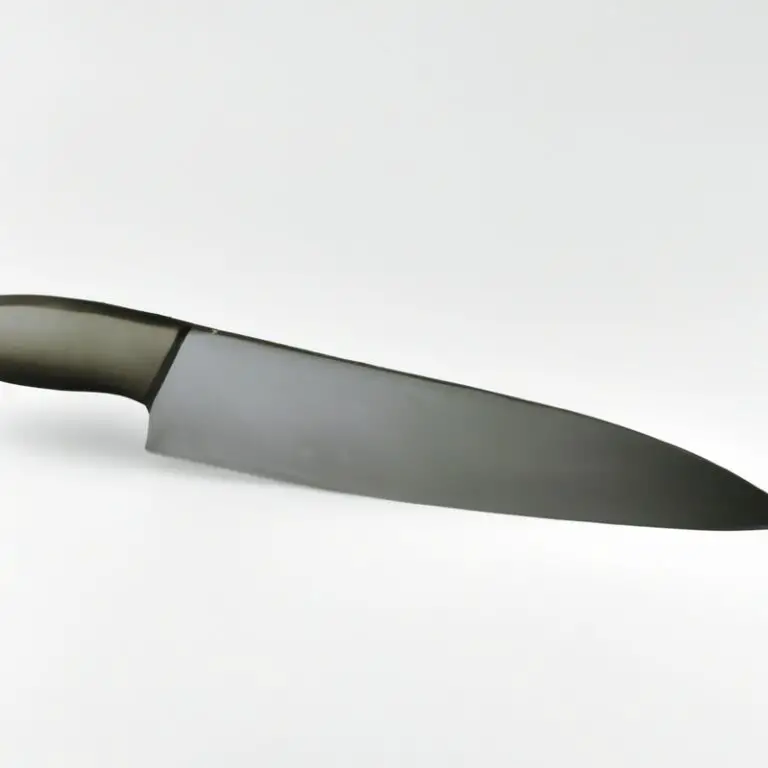What Are The Essential Features Of a Well-Balanced Gyuto Knife? Unleashed!
Key Takeaways:
- A well-balanced Gyuto knife has a comfortable handle that fits your hand well, allowing for better grip and control during use.
- The blade of a well-balanced Gyuto knife should be thin and sharp, providing a clean cut without applying too much pressure.
- The weight and length of a Gyuto knife should be proportional to each other, ensuring an even distribution of weight for precise cutting.
- A high-quality Gyuto knife will be made from premium materials, such as high-carbon stainless steel, for durability and longevity.
Have you ever struggled with slicing, dicing, or chopping ingredients in the kitchen? We’ve all been there.
But what if we told you that the right knife could make all the difference?
Enter the Gyuto knife, a Japanese chef’s knife that has taken the culinary world by storm. In this article, we’ll explore the essential features that make up a well-balanced Gyuto knife, from the blade edge, length, and shape, to the handle comfort, weight, and tang.
Plus, we’ll discuss the heat treatment process and the importance of maintaining a sharp edge.
Let’s dive in!
| Feature | Description |
|---|---|
| Blade Material | A good Gyuto knife should have a high-quality blade made of either high-carbon steel or stainless steel. High carbon steel is known for its sharpness and holds an edge longer than stainless steel, while stainless steel is less susceptible to rust and corrosion. |
| Blade Length | The blade length of a Gyuto knife generally ranges from 7 to 10 inches, with most falling around 8 inches. This length provides a good balance between control and versatility. |
| Blade Thickness | The blade thickness should be thin enough for precise cuts, yet thick enough to provide durability and stability when cutting through tougher ingredients. |
| Blade Edge | A well-balanced Gyuto knife should have a straight, sharp edge that is easy to maintain and sharpen. |
| Handle | The handle should be comfortable and ergonomic, made of durable materials like wood, plastic, or composite. It should also be properly balanced with the blade. |
| Bolster | The bolster provides balance and protection for fingers, preventing them from slipping onto the blade during use. |
| Tang | The tang should be full, meaning it extends through the entire handle, providing the knife with balance and durability. |
| Weight | A well-balanced Gyuto knife should not be too heavy or too light, but rather feel comfortable in the hand with a good balance between the blade and handle. |
The Anatomy of a Gyuto Knife: Understanding the Different Parts and Their Functions
A gyuto knife is a versatile and indispensable tool in any kitchen. Understanding its anatomy is crucial in choosing the right knife for your needs.
The different parts of a gyuto knife include the blade, handle, tang, and edge.
The blade is the main cutting component of a gyuto knife. It comes in different materials, such as stainless steel, high-carbon steel, and Damascus steel.
The blade’s length and shape also vary depending on its intended use.
A longer blade is suitable for slicing and chopping, while a shorter one is ideal for precision tasks like peeling and paring. The handle provides a comfortable and secure grip while using the knife.
It is often made of materials like wood, plastic, or stainless steel.
A comfortable handle ensures optimal knife control and reduces the risk of hand fatigue. The tang is the portion of the blade that extends into the handle.
The tang can be either full or partial.
A full tang provides better balance and durability, while a partial tang is lighter and more affordable. The edge is the blade’s sharp side that cuts through food.
A gyuto knife can have either a straight or a curved edge.
A straight edge is ideal for precision cuts, while a curved edge is best for rocking motions. Knowing the different parts and their functions of a gyuto knife is crucial in finding the perfect knife for your needs.
The Importance of the Blade Edge: How to Choose the Right Material and Design
The blade edge is the most crucial part of any knife, and choosing the right material and design is essential for a well-balanced Gyuto knife. When selecting material, consider the quality of the steel, its hardness, and its ability to hold a sharp edge.
The most popular materials for Gyuto knives are high-carbon steel, stainless steel, and Damascus steel.
The design of the blade edge is equally important. A straight edge provides excellent precision and control, while a serrated edge works best for cutting through tough or fibrous materials.
A granton edge features small divots that create air pockets, reducing friction and preventing food from sticking to the blade.
It is also crucial to consider the angle of the blade edge. A lower angle provides a sharper edge but is more delicate, while a more substantial angle creates a more durable edge but is less sharp.
When choosing the blade edge for your Gyuto knife, consider your cutting needs and preferences.
A versatile knife with a straight edge is suitable for most tasks, while a serrated edge may work better for specific purposes. Choose the design that works best for your needs and make sure to maintain the edge regularly for optimal performance.
Exploring Blade Length: Finding the Perfect Balance for Your Cutting Needs
Blade length is an essential factor to consider when selecting a Gyuto knife. While longer blades offer more slicing surface, they can be challenging to maneuver in tight spaces.
Conversely, shorter blades are more manageable, but they may not be suitable for more extensive cuts.
Ideally, blade length should be determined by your cutting needs and comfort level. When deciding on the right blade length for your Gyuto knife, consider the kinds of ingredients you will be cutting and your preferred cutting techniques.
A length of 210mm is an industry-standard, while lengths between 180mm and 240mm are also popular.
Ultimately, the balance and comfort in your hand should guide your decision when selecting blade length.
The Handle Matters: Why Comfort and Grip are Key for Efficient Knife Use
The handle of a gyuto knife is just as important as its blade. A comfortable and secure grip is essential for efficient and safe knife use.
When choosing a handle, consider the material, shape, and size that best suits your needs.
Materials such as wood, plastic, and metal offer different levels of grip and durability, while the shape and size should fit comfortably in your hand. Additionally, pay attention to the handle’s balance with the blade to ensure a well-balanced knife that won’t cause hand fatigue during prolonged use.
Overall, a comfortable and secure grip will prevent accidents and enhance the precision and control over your cuts.
The Weight Debate: The Pros and Cons of Light vs. Heavy Gyuto Knives
The weight of a Gyuto knife is a crucial factor to consider when choosing the right knife. Lighter knives are easier to maneuver and control for more delicate tasks, while heavier knives provide more power for tougher jobs.
However, a heavy knife can cause fatigue and strain on the wrist during prolonged use.
On the other hand, a light knife may not provide enough weight to cut through tougher foods easily. Ultimately, the weight of a knife is a personal preference, and it is essential to choose a knife that feels balanced and comfortable in your hand.
The Blade Shape Matters: Understanding the Different Styles and Their Benefits
The shape of a blade plays a crucial role in the performance of a Gyuto knife. There are various blade styles, each with unique benefits suited for different types of cuttings.
Here are the common blade shapes with their advantages:
- Straight Edge: Best for precise slicing and push cuts. Excellent for handling fruits, vegetables, and meat.
- Serrated Edge: Ideal for cutting through foods with hard exteriors and soft interiors, like bread, tomatoes, and cheese.
- Curved Edge: Curved blade enables rocking motion, perfect for chopping and slicing through dense vegetables and meats.
- Granton Edge: Ribbed or scalloped edges reduce friction and sticking, making slicing tasks smoother and faster.
Overall, the right blade shape depends on your cutting needs and preferences. It’s best to try different blade shapes to find what works for you.
The Tang Factor: Why a Full Tang is Essential for Durability and Balance
A full tang is essential for durability and balance in a well-balanced Gyuto knife. The tang refers to the part of the blade that extends into the handle.
A full tang means the blade extends throughout the handle, providing a strong and balanced knife.
A partial tang, on the other hand, only extends partway into the handle, which can weaken the knife’s balance and increase the risk of damage or breakage. A full tang is critical for withstanding the pressure and force applied during kitchen tasks like slicing, dicing, and chopping.
It ensures that the knife remains balanced and resilient, able to withstand the rigors of daily use for years to come.
Ultimately, a full tang is a crucial feature to look for when choosing a well-balanced Gyuto knife.
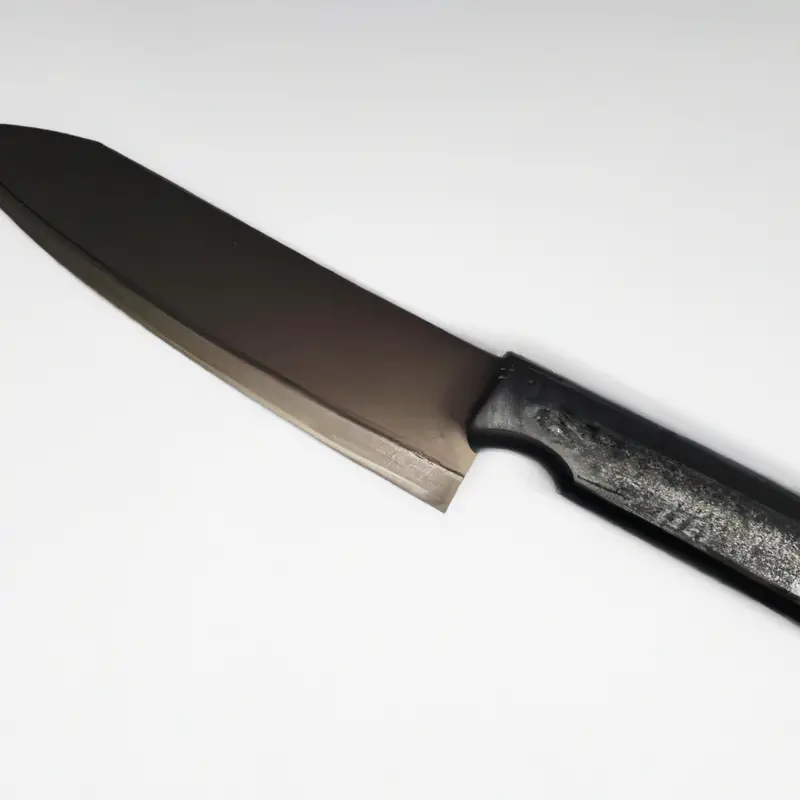
The Role of Blade Thickness: Finding the Optimal Thickness for Your Cutting Style
Blade thickness plays a crucial role in determining the cutting performance and durability of a Gyuto knife. Generally, thinner blades are suitable for delicate tasks like filleting, while thicker blades are ideal for heavy chopping and cutting hard materials.
The optimal thickness of the blade depends on your cutting style and the type of food you are cutting.
For versatile use, a blade thickness ranging from 2-3mm is recommended. However, specialty knives like Deba and Nakiri have specific blade thickness for specialized tasks.
When selecting a Gyuto knife, ensure the blade thickness is compatible with your intended use for optimal performance and efficiency.
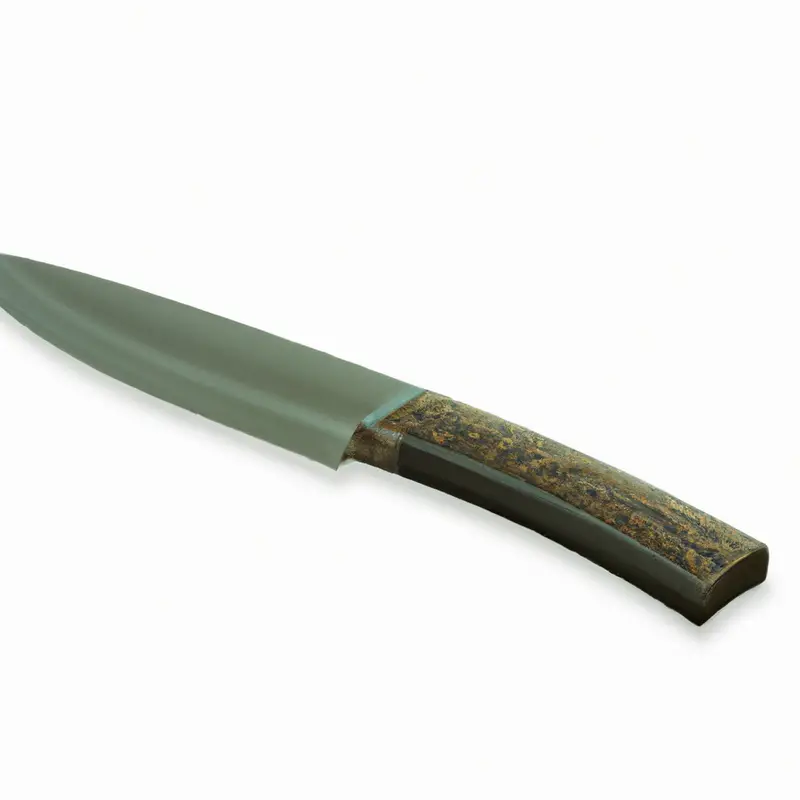
The Heat Treatment Process: How it Affects the Blade Strength and Performance
The heat treatment process is crucial to the strength and performance of a Gyuto knife blade. It involves heating the blade to a specific temperature and then rapidly cooling it to create a hardened surface.
This process affects the overall hardness, flexibility, and toughness of the blade.
A well-tempered Gyuto blade should be hard enough to maintain a sharp edge but flexible enough to withstand repeated use without chipping or breaking. Ensuring a proper heat treatment process during the manufacturing of a Gyuto knife is essential for maximizing its performance and durability.
The Importance of Sharpness: Tips for Maintaining a Razor-sharp Edge on Your Gyuto Knife
Maintaining a sharp edge is crucial for efficient and safe cutting with a Gyuto knife. A dull blade requires more force to slice through food, risking slips, and increasing the risk of injury.
To maintain a razor-sharp edge, use a honing rod regularly to realign the blade’s edge.
Sharpen the blade with a whetstone when the honing rod no longer provides the desired sharpness. Use the correct angle and pressure while sharpening, and rinse the blade with water and dry it after use to prevent rusting.
Additionally, avoid twisting, prying, or using a dull blade and cutting hard surfaces like bones, frozen foods, or ceramic plates.
Final Verdict
A well-balanced Gyuto knife is essential for any professional chef or home cook. With the right combination of blade edge, length, handle, weight, blade shape, tang, thickness, and heat treatment, you can achieve optimal performance and durability.
By understanding these essential features, you can choose a Gyuto knife that meets your specific cutting needs and preferences.
Don’t forget the importance of maintaining a sharp edge through proper care and sharpening techniques. With these tips and insights, you can confidently select and use a well-balanced Gyuto knife that will deliver precision, comfort, and longevity.
Trust in your tools, and your culinary creations will soar.

